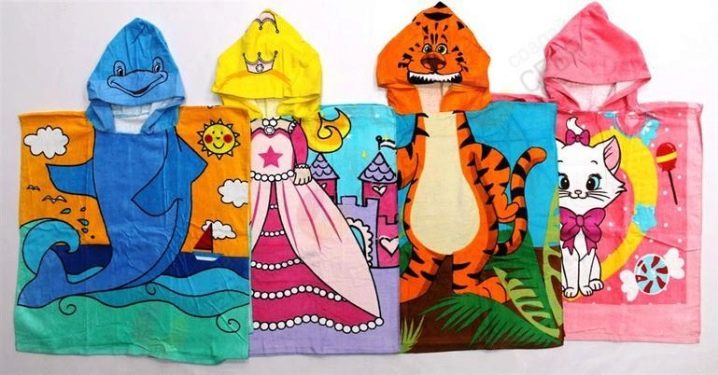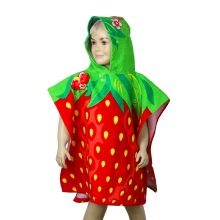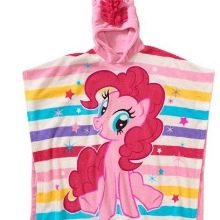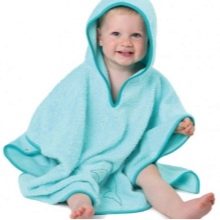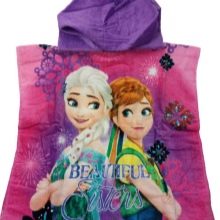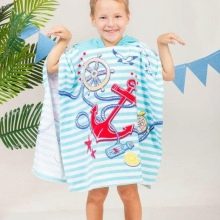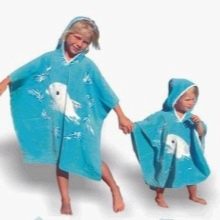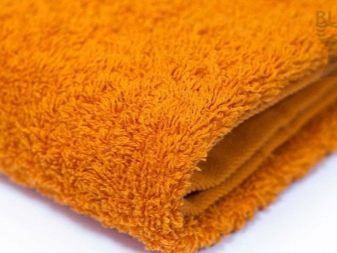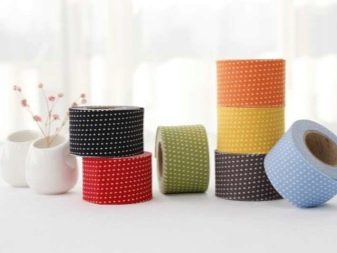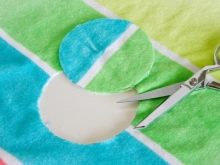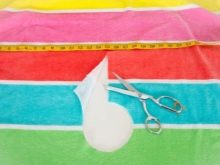Subtleties of choice towels poncho
Towel - perhaps the most sought-after of the essentials. And how many varieties of it exist - and the bath, and kitchen, and beach. This article will be told about one more form - poncho towel.
This is a very convenient innovation, invented for children.
Special features
Towel poncho - is, in fact, a towel with a hood. After taking a bath or a baby shower, you need to wrap up so that the temperature jump does not affect the well-being of your baby. Yes, and the feeling of cool air after the heat of the water does not like children. Sometimes it takes several panels to cover a child wet from head to toe. But it is impossible to fix them well on the child. He fidgets, moves, and the towels open naturally.
In this situation, the actual use of towels with a hood. It protects against temperature leaps, absorbs water from the body and hair of the child, protects against drafts, and the delicate fabric comfortably wraps the skin. When bathing in the fresh air, it will also protect the delicate skin of your child from excessive sun exposure. Believe me, wrapping your baby in a poncho towel, you will want the same for yourself.
Currently on the market are a huge number of products for all ages. You can choose any design, color, or you can sew such a towel-poncho with your own hands. Believe me, this is no big deal.
How to sew your own hands?
First you need to decide on the size of the future product. To do this you will need several measurements:
- head circumference (OG) - for the pattern of the hood;
- arm span - for the width of the product;
- from the clavicle to the ankle - for length.
Next, select the fabric and edging material. For sewing any towels, you need to pick up natural fabrics, since only they have a high ability to absorb water.
Experts recommend to opt for terry textiles with a long nap (makhra).
The amount of material needed is simply determined - multiply the length of the future product by 2 and add half the head circumference measure. As a border, it is advised to use a braid or a satin banding (it will take about 6 m).
Now we will start cutting. First, transfer the measurements to a piece of cloth. Cut the two lengths of the product from a piece of cloth. The width of the pattern should be the amount of arm span. If excess remains, cut it off. Round the edges of the back and front, that is, the corners of the resulting rectangle. The curve of the hood looks like 2 squares, the side length of which is equal to ½ OG.
To cut the neck of the product, fold the main pattern along the length and designate the center. From it on the front of the future poncho draw a semicircle with a radius equal to a quarter of the exhaust gas. Carefully cut it out.
Sew the details of the hood to each other. Treat its edges with edging.
Make a loop of 5 cm edging material. Sew it in the middle of the back of the neck. Next, sew the hood and the main piece. Turn over the edges of the almost finished towel-poncho with a braid or piping.
Sew the details of the hood to each other. Treat its edges with edging.
Make a loop of 5 cm edging material. Sew it in the middle of the back of the neck. Next, sew the hood and the main piece. Turn over the edges of the almost finished towel-poncho with a braid or piping.
Product care
Cotton terry material does not require special care.
- He does not sit down, can be erased and manually, and in a typewriter.
- Before using the towel, poncho should be washed and ironed.
- Observe the necessary washing modes (for color and light things) to prevent molting of the product.
- Before the end of the wash, use fabric softener to keep the towel soft and gentle.
- When hand washing in water for the last rinse, add salt and leave for a quarter of an hour. After rinse it well. This will allow the mahr to remain soft for a long time, while at the same time disinfecting it.
- It is better to dry the product in the fresh air in the shade.
- Ironing is necessary when wet or under steam.
Try and see for yourself that the towel-poncho is a necessary thing for both children and adults.
Master class on making towels, ponchos in the next video.
